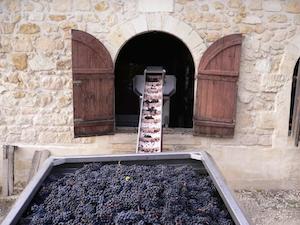
As soon as the grapes are harvested, they start the vinification process to extract the different compounds from the grapes and to optimise the quality of the wine produced. Once the grapes are brought to the chai from the vineyard, the grape must starts to ferment to transform the sugar into alcohol with the help of yeast. The juice then becomes wine. Often a second fermentation then takes place to turn the malic acid into lactic acid, making the wine rounder and softer. The wine then enters the ageing period in vats or oak barrels.
The general principle seems fairly straightforward, but there are different processes according to grape varietal, colour and wine producing regions. And at each step, the winemaker takes decisions that are crucial in influencing the aroma and taste of the wine. These choices are personal and so there are as many different ways of vinifying and ageing wine as there are winemakers!
Without going into specific vinification details for rosé, sparkling or sweet wines, there are two principal details for vinifying white and red wines.
First the white wines. Once the grapes have been picked and sorted, and have arrived in the chai, they are put into a wine press to extract the juice from the grapes. The time that the pulp and grape skins are in contact with each other is very short for white wine, explaining why the wine is lightly coloured. Next the juice is clarified by removing the solid particles present in the must, such as skin, pip or stalk particles. This is done by letting the particles settle or by centrifuge. The juice then ferments to become wine and enters the ageing phase which can be just a few weeks or a few years for wines that are made for keeping. Ageing can be in barrels or vats.
For the red wines, the process is slightly different. Once the grapes have been picked and sorted, they are put into a vat, either whole or having been separated from the stems. Sometimes the grapes are lightly crushed to set free some of the must. In the vat the grapes are left to macerate so that the juice can extract the tannins and colour from the skin and pips.
The alcoholic fermentation starts at the same time and generally lasts between one and three weeks. Once it has finished we draw off the liquid. The remaining solid matter is known as marc and is then pressed to extract the wine that has been soaked into it. This is known as press wine, and the winemaker can choose whether or not to blend it with the rest of the wine. The wine is then left to finish the fermentation, alcoholic and malo-lactic, before being aged in barrels or vats.
At each step of the way, the winemaker tastes the grapes and wines, analyses them, and then makes a multitude of decisions such as how strong to press, whether to de-stem the bunches, how long to let the wine macerate, how long to age the wine, whether to use vats or barrels... As many important choices as there are different wines!
Comments
No comments.




